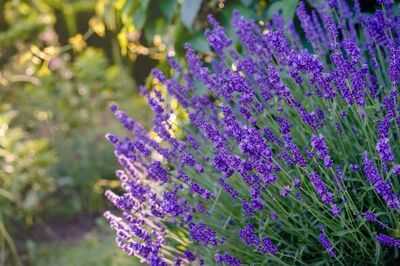

, often associated with serene summer days due to their medium purple or light pinkish-purple colour, offer a sense of tranquillity. Their distinctively fragrant aroma can have a soothing effect, making them a perfect addition for those seeking peaceful afternoons in the . While lavender plants are known for their resilience, thriving even in nutrient-poor soils, a bit of can promote their growth considerably.
Nevertheless, enthusiasts must understand that over-fertilising lavender can lead to excessive foliage at the expense of flowering, or it may even prove fatal for the plant. That said, feeding lavender isn't off-limits - it's just about finding the right balance. Garden experts suggest the optimum time to fertilise lavender is once in spring, marking the commencement of its growing season.

So, when it comes to feeding your lavender plants, what options are available? Well, Stephanie, from the home and DIY blog Celebrated Herb, is a big fan of using kitchen waste.
She advised: "Lavender plants do not require a lot of nutrients, but you can still use some kitchen scraps to provide them with additional nourishment."
1. Coffee groundsAn "excellent" source of nitrogen, essential for plant growth, is used coffee grounds, according to Stephanie.

Not only can coffee grounds assist lavenders, but they also encourage hydrangeas and roses to develop more vibrant and bigger blooms.
A mere sprinkle of coffee grounds around the base of your lavender plants worked gently into the soil, can make a difference.
2. Banana peelsBanana peels, rich in potassium, can encourage your plants to "flower more" and strengthen their roots. To utilise them, simply chop up the peels and bury them in the soil around your lavender plants.
They're also beneficial for encouraging your orchids to flower and your roses to bloom.
3. Vegetable scrapsVegetable scraps like carrot tops and lettuce leaves can be transformed into a "homemade that can provide your lavender plants with additional nutrients".
Just layer these scraps with dry leaves and grass clippings in a compost bin and wait for them to decompose into nutrient-rich compost.
However, Stephanie emphasised that kitchen scraps "should not be the sole source of nutrients" for your lavender plants, and they should be used sparingly to avoid over-fertilising.